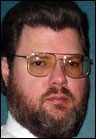Florida Hospital, one of the largest hospitals in the United States, is employing Wi-Fi RFID tags to wirelessly track the temperatures of refrigeration units in seven campuses from a central server. The installation utilizes temperature probes attached to AeroScout battery-powered 2.45 GHz RFID tags. Florida Hospital also installed some extra Wi-Fi nodes, to provide better network coverage in areas where the pharmaceutical refrigerators are located. The tags transmit the temperatures every five minutes to Cisco Wi-Fi access points, which then forward that temperature data and the tag’s ID number to the AeroScout MobileView software residing on the hospital’s back-end server. The MobileView application has maps of all seven buildings that can be displayed with icons representing each tagged refrigerator
With AeroScout T2 RFID tags and temperature probes installed at 170 of its 200 pharmaceutical refrigerators to date, in seven separate buildings throughout Orlando, the hospital’s IT department is now adjusting the software settings to meet the needs of its staff, thereby allowing different temperature thresholds and alert responses for different cooler units. Putting the technology into place and ensuring that it works is 5 percent of the challenge, says Todd Frantz, the hospital’s CTO. The remaining 95 percent, he adds, involves determining how to set the perimeters and what to do with that information. The technology itself works well, he says.
Once the hospital receives the data, its options are many. The software can be configured to meet the specific needs of each refrigeration unit, and be adjusted to best differentiate a problem (such as a non-functioning refrigerator) from normal usage, such as a unit with a door that is repeatedly opened and closed.
According to Frantz, the hospital—which has 2,200 beds in its seven buildings—knew it not only needed a system to meet regulatory requirements from groups such as the Joint Commission to track temperatures on a daily basis, it also needed one that could protect its inventory. In one case, a refrigerator containing $40,000 worth of pharmaceutical products was moved to another part of the room, to enable crews to perform renovation work in that area. Although the unit was supposed to be plugged in at its temporary location, as well as when it returned to its original spot, its power supply was cut off during the renovation work, and the inventory stored within was destroyed. A real-time locating system (RTLS) would have been able to detect that problem and issue an alert.
The facility first began by testing the AeroScout system on a refrigerator in the IT lunchroom, with several tags and temperature probes installed in the unit at a time, in order to test the hardware. Once assured that the system was working properly, the staff began placing the tags on some refrigerators in all seven buildings. Frantz says he can now monitor that data from all of those locations using his PC.
But determining what to do with the information has been Frantz’s challenge since the tags were installed in the fall of 2009. He has determined, for instance, that the alerts need to be set at a threshold that is not too rigid, but that can still notify the IT team when a problem occurs. For example, he says, nurses would not be responsive to a warning from the IT department that refrigerators have reached 46.3 degrees Fahrenheit. On the other hand, they would respond to an alert indicating a refrigerator has remained above 47 degrees for a specified length of time, indicating someone has left its door open.
The data has already proved that not all refrigeration units are created equal, Frantz says. Some are used continuously, particularly at certain times of the day, which may raise the temperature, for example, in the early mornings. This does not necessarily indicate a door being left open, but rather a very busy refrigerator whose door is being opened many times throughout the day. In other cases, appliances remain closed nearly all day.
“The trick is to keep the refrigerator from being left ajar,” Frantz says, and that is where adjusting the alerting system has paid off. The hospital is now setting the system to appropriately warn employees (through an e-mail or page) when the temperature has remained unacceptably raised for any specific refrigerator. The data has helped the facility to identify units that have sticking doors, which are more likely not to close properly, and thereby correct the problems by, for example, replacing the latch.
Frantz says he expects to also further study how he will use the temperature data. One option is for security, because if a refrigerator door is left open, then it is clearly unlocked, meaning the pharmaceuticals within that unit could be at risk for theft.
The hospital plans to install AeroScout tags and temperature probes on all of its 200 pharmaceutical refrigerators, then begin working on the food refrigerators, though there is no deadline set for completing that tagging. Adventist Health System, the hospital’s parent company, may then decide to install the system at all of its facilities, if the Florida Hospital system continues to be successful. MobileView will be able to accommodate that expansion, says Joel Cook, AeroScout’s marketing director for health-care solutions. Because it is a Web-based server, Adventist could track the temperatures at all of its 37 organizations from a single, central location.
“Because of its size and complexity, there could be lots of different users,” adds Steffan Haithcox, AeroScout’s senior director of marketing. By testing the system at Florida Hospital, the health-care provider can now ensure that the software can be accessed, and that alerts can be sent from many different locations.
The hospital intends to measure the system’s success based on increased safety, rather than on financial savings. “Our implementation is primarily about patient safety by managing storage temperatures,” Frantz states. However, he adds, “cost avoidance should follow, as early alerting helps us prevent spoilage caused by out-of-range temperatures.”


